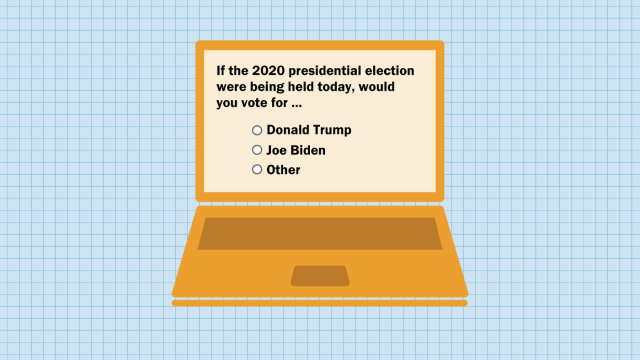Advertisement
On Politics With Lisa Lerer
There are signs that Joe Biden’s campaign is exploring more paths to victory in the Electoral College than recent Democratic nominees.
Hi. Welcome to On Politics, your guide to the day in national politics. I’m Lisa Lerer, your host.
Sign up here to get On Politics in your inbox every weekday.

Presidential elections don’t offer extra credit. As we all know, it’s 270 to win. Hitting 292 or 336 electoral votes doesn’t get a candidate more executive power or a bigger White House.
That’s why Barack Obama’s campaign opted against seriously contesting Georgia in 2012, even as his team saw the demographics of the state changing. Other states, like Colorado and Virginia, presented an easier way to get to that magic 270. It’s the same calculation that Hillary Clinton made four years later, as she focused on Florida, Ohio and other traditional swing states (with less success).
The goal is not to rack up the most electoral votes but to find the path of least resistance.
Yet there are emerging signs that Joe Biden is exploring an expanded map, with several more possible paths to victory, than either of the most recent Democratic nominees.
“I am certain that states will be battleground states that haven’t been battleground states before,” Mr. Biden’s campaign manager, Jennifer O’Malley Dillon, told alumni of Mr. Obama’s administration and campaigns during a fund-raiser this month, saying she was particularly “bullish” on Arizona and viewed Florida as in play.
Of course, campaign managers often suggest broader opportunities for their candidates, both to build enthusiasm among their supporters and to head-fake their opponents into stretching their resources. (Remember when Mrs. Clinton “made a play” for Utah?)
But the effects of long-running demographic shifts and the more immediate impact of the coronavirus pandemic could mean that Ms. O’Malley Dillon’s remarks end up being more than just standard political bluster.
Democratic post-traumatic election disorder has kept much of the focus on the three Rust Belt states that eluded the party in 2016: Michigan, Wisconsin and Pennsylvania.
But in 2020, the road to the White House may run through the West, the Sun Belt or even the South.
For years, the Democratic Party has grown more female, younger and more diverse. The Trump presidency exacerbated those trends, pushing more women, suburban voters and college-educated voters into the arms of Democrats. Already, we’ve seen those shifts play out with Democrats winning seats in state legislatures, governors’ mansions and Congress in states like Arizona, Pennsylvania and Virginia.
Then you add the coronavirus to the electoral mix.
Over the weekend, Doug Sosnik, Bill Clinton’s White House political director, suggested that the economic and health effects of the virus could strengthen Mr. Biden’s hand in Michigan and Pennsylvania — places where Democrats have already racked up victories during the Trump era.
In both states, more than a quarter of the work force has filed for unemployment and the death counts are some of the highest in the country. Yet their governors, both Democrats, each have a 72 percent approval rating for their handling of the virus, and polling shows Mr. Biden with a broad lead in the presidential race.
Wisconsin, Mr. Sosnik says, isn’t quite as favorable to Mr. Biden. But that may not matter, if Mr. Biden can expand the number of states where he has a real shot. He could reach 270, for example, by holding onto the states Mrs. Clinton won and doing one of the following:
-
winning back Michigan and Pennsylvania, and adding traditionally red Arizona.
-
winning back Michigan, and adding Arizona and North Carolina.
-
following a Southern strategy, winning North Carolina and recapturing the most notorious state on the electoral map, a place Democrats thought was lost but now believe could be back in play — Florida.
And we’re not even talking about places like Texas and Georgia, which remain harder lifts for Democrats even as they trend closer to purple. Recent polls have shown both states in a dead heat.
Political strategists warn that there are months to go before Election Day. To say the political environment remains fluid is an understatement, as the coronavirus deaths and unemployment checks continue to mount.
“If the election was held now, it’s an expanded map for Biden,” said Michael Halle, Mrs. Clinton’s former battleground state director and a senior adviser to Pete Buttigieg. “But the polling numbers right now have to be taken somewhat with a grain of salt because we’re still a long way from Election Day. A lot can change.”
In-person graduations may be canceled, but that hasn’t stopped politicians from doing what politicians do best: speaking.
This past weekend, former President Barack Obama delivered two virtual commencement addresses, urging high school and college graduates to “to seize the initiative” at a time when he says the nation’s leaders are fumbling. Former Gov. Arnold Schwarzenegger of California recounted his unexpected heart surgery, telling graduates, “Life will always throw obstacles in your path.” And Senator Ben Sasse gave one of the strangest high school graduation speeches, well, probably ever. (One highlight: “Everybody named Jeremy is the worst.”)
The speeches were all fairly political. Perhaps that’s not surprising, given that these students are finishing school not only in the midst of a pandemic but also surrounded by extraordinary political polarization.
We want to know: What political advice would you give the graduates of 2020? (Or if you’re still in school, what would your valedictory remarks be?) Email us at onpolitics@nytimes.com and be sure to include your name and location. We might feature your comments in a future installment of the newsletter.
On Sunday afternoon, as many of us were enjoying some self-quarantine downtime, a little internet mystery began. Out of the blue, Elon Musk, Tesla’s chief executive, tweeted “Take the red pill,” followed by a rose emoji, to his more than 34 million followers. Ivanka Trump, the president’s elder daughter and a White House adviser, followed up by posting, “Taken!”
I have to admit, I didn’t quite get what was going on. But I knew it was all quite bizarre and quite politically loaded.
I called one of our resident internet culture experts, Taylor Lorenz, to (try to) explain.
The concept of being “red pilled” has been widely adopted by the incel community, neo-Nazis and right-wing extremists to signify that they’ve become awakened to these fringe ideologies. The phrase references a scene in “The Matrix” where the main character, Neo, must choose between a blue pill, which keeps him safely ignorant, or a red pill, which allows him to see the underlying truth about the world. The rose emoji has become the unofficial symbol of the Democratic Socialists of America.
What exactly Mr. Musk meant by his tweet is anyone’s guess. The entrepreneur is steeped in internet culture and regularly tweets outlandish things for attention. It’s similarly unclear what Ms. Trump meant when she added her comment.
But Mr. Musk, who once described himself as “openly moderate” and supported Andrew Yang in the Democratic presidential primary, has recently sided with President Trump and anti-lockdown protesters in opposing states’ stay-at-home orders. He referred to them as “fascist” and declared last week that he would reopen his Fremont, Calif., factory in defiance of local orders.
“Elon, who is extremely online, is leaning into this because the right wing push to open the economy benefits him and his businesses,” tweeted the BuzzFeed journalist Ryan Mac, who has covered Mr. Musk extensively. “The right will believe he’s one of them. But really, he has no politics beyond what’s in his own immediate self-interest and will act accordingly.”
Whatever their intention, Mr. Musk and Ms. Trump provoked a reaction: Lilly Wachowski, one of the directors of “The Matrix,” promptly responded to Ms. Trump’s tweet with an obscenity aimed at both of them.
The mother of Mr. Musk’s girlfriend, Grimes, also weighed in, accusing him of “blaring MRA” nonsense. MRA is an acronym for “men’s rights activism,” a misogynistic movement that frequently uses the term “red pilled.” (Grimes recently gave birth to the couple’s son, who they say is named X Æ A-12 Musk.)
Hours after his initial tweet, Mr. Musk posted a “Matrix” meme about taking both the red and the blue pill with the caption, “When u take DayQuil & NyQuil at same time.”
Pool tubes are the new going out shirt?
Thanks for reading. On Politics is your guide to the political news cycle, delivering clarity from the chaos.
On Politics is also available as a newsletter. Sign up here to get it delivered to your inbox.
Is there anything you think we’re missing? Anything you want to see more of? We’d love to hear from you. Email us at onpolitics@nytimes.com.


